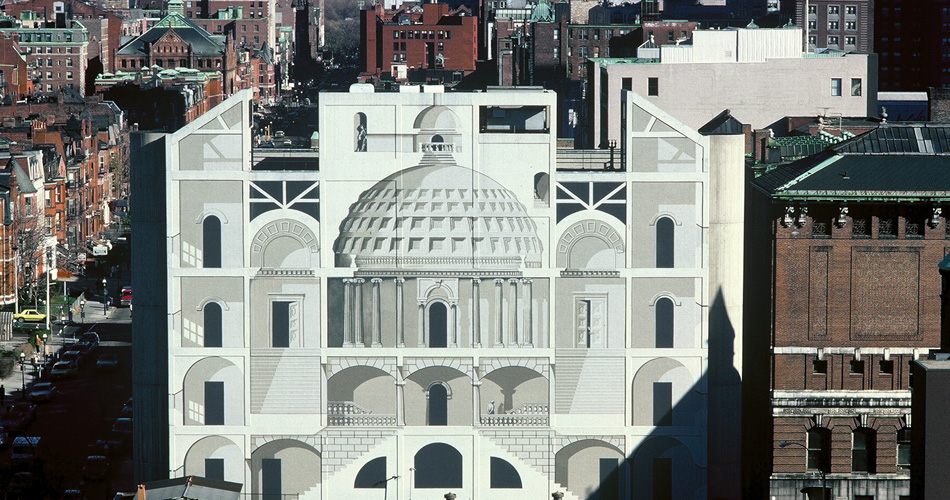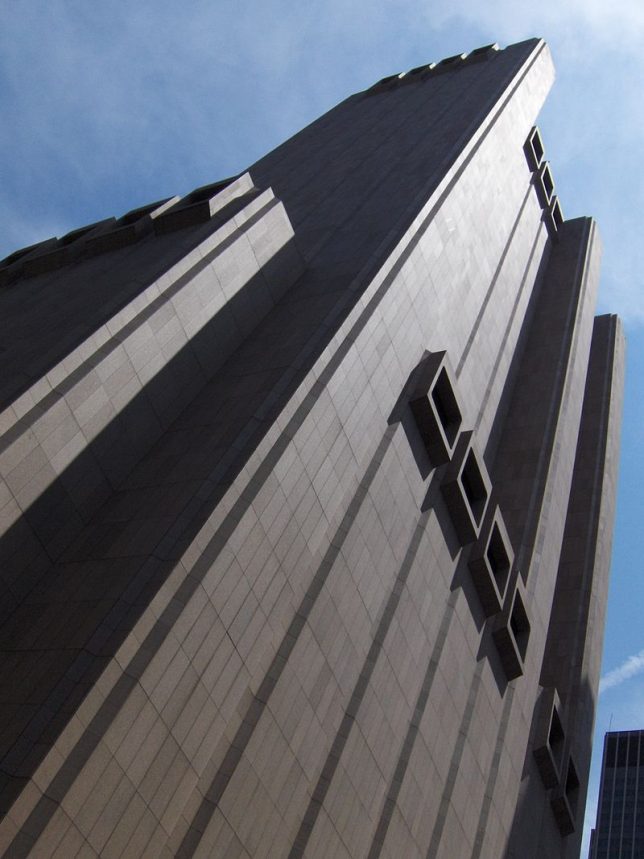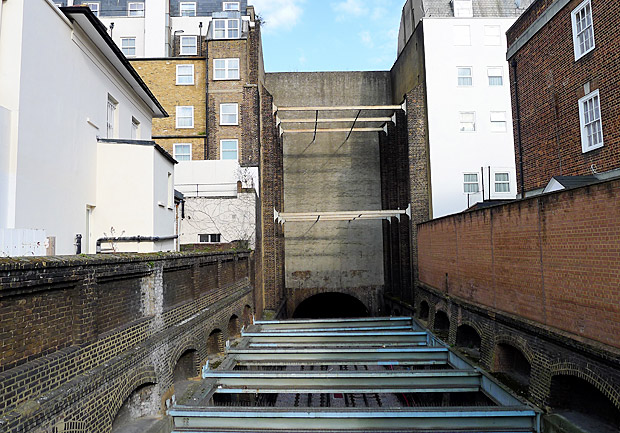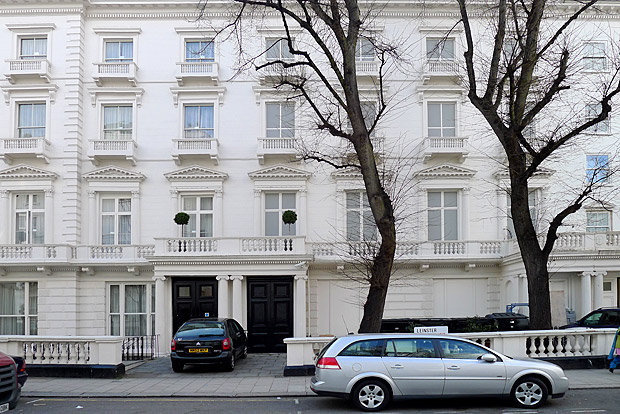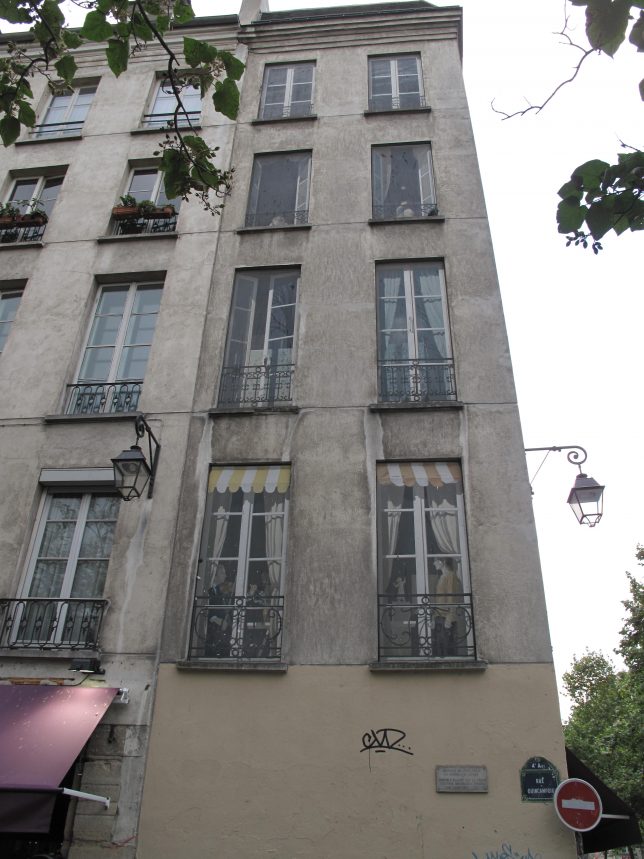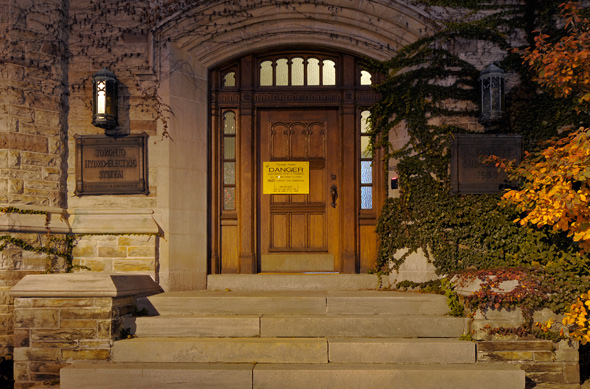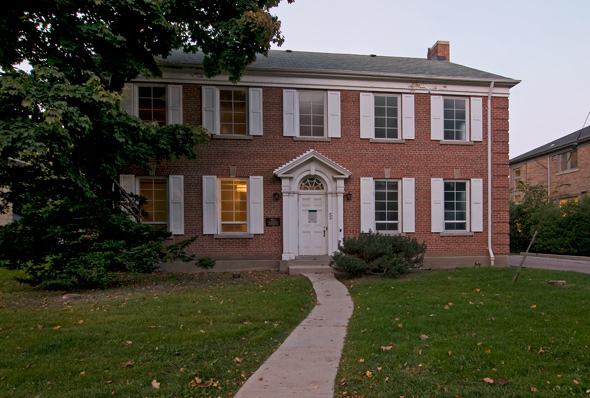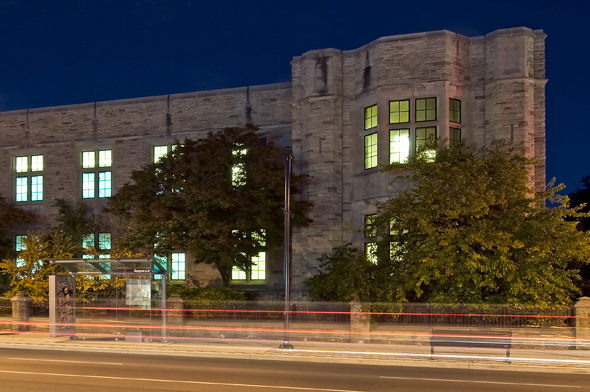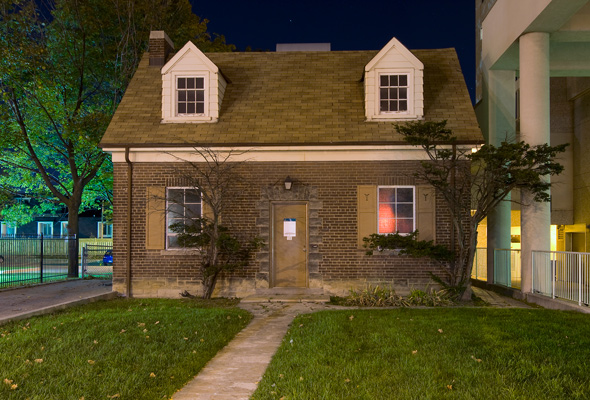The cities of the world have a lot to hide, and while some of those things might be top secret government operations, others are as unremarkable as an ugly ventilation shaft, an electrical substation, a failing and vacant downtown area or just a sad, blank wall that needs some fake windows to improve its looks. Our urban surroundings are full of faux details, from facades and doors to massive hyperrealistic architectural murals, all trying to convince us that these structures are nicer, newer, livelier or more innocent than they really are.
NSA Building Hiding in Plain Sight
In retrospect, maybe New Yorkers should have known that this vaguely evil-looking, almost entirely windowless monolith of a building was secretly owned by the National Security Administration. It was apparently disguised as an AT&T building for over a decade, and it’s built like that to withstand a nuclear blast. Located at 33 Thomas Street, the 1974 Brutalist structure functions (surprise!) as a surveillance hub.
False Facades in Leinster Gardens, London Hiding Train Tracks
There are no real telltale signs that the houses at 23 and 24 Leinster Gardens in London are anything other than ordinary – until you take a walk along the street behind them to see the back of the faux facade and the hollow space it hides, as captured in these images by Urban 75. The actual houses that once stood in this spot were demolished to build a tunnel connection two London Underground stations; this void is actually the top of a ventilation shaft.
Parisian Ventilation Tower with Trompe L’oeil Facade
Casual passersby might not look up to examine the windows of this structure on Rue Quincampoix in Paris. If they did, it probably wouldn’t take them too long to notice that they’re actually painted on, some permanently open to billowing curtains and dimly-lit rooms beyond. The mural helps disguise yet another urban ventilation shaft.
Toronto’s Camouflaged Substations
Many a seemingly elegant building in Toronto is not what it seems. Disguised among the city’s historic structures are a number of electrical substations, designed to blend in with their environments. While expanding the power grid in the early 20th century, Toronto Hydro, established in 1911, hired a team of architects whose sole purpose was to hide what would otherwise be unsightly metal structures. You can spot them by their ‘Keep Out!’ ‘Danger!’ signs posted to the doors. The Glengrove substation at 2833 Yonge Street is a prime example.
